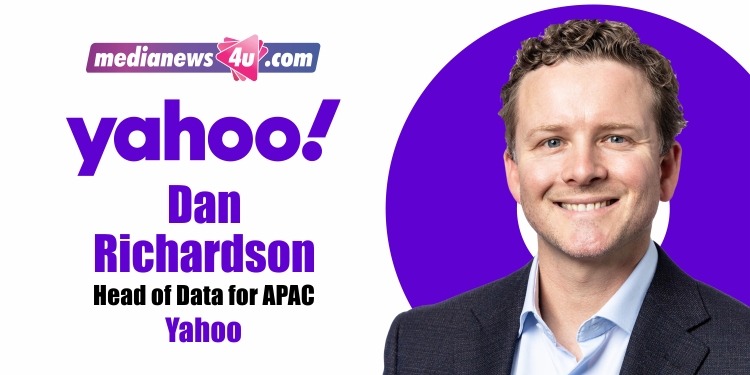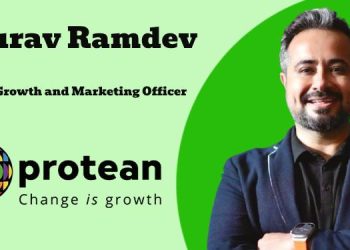What makes Yahoo remain relevant for users and advertisers today? And is there a need to reinvent itself?
Dan: Yahoo! has been reinventing itself in many ways. We’ve been around for almost 27 years now. So, we’re one of the fathers of the internet. But we’ve reinvented ourselves more times than Madonna. With its many twists and turns, the brand has always emerged stronger.
The first reinvention that I observed was when we moved beyond being known for publishing and search to creating a strong ad tech brand. Yahoo’s ad tech powers much of the media industry, connecting advertisers with consumers across screens, helping publishers monetise their content, and creating unique ad and content experiences.
Why do we remain relevant to our advertisers and users? 900 million people visit our premium sites and products every month. For users, Yahoo provides a really valuable exchange when it comes to data. Looking at the Yahoo Mail product, particularly since it is totally geared for e-commerce: more than half of all of the content that comes into that mailbox are receipts, loyalty, and vouchers, so that’s really how that product is used by consumers. And that’s adding value, as well.
Considering brands and publishers… Yahoo is one of those two technology companies on the internet right now that will have an identity solution based on a direct consumer relationship. What I mean is that when we talk about things like the cookie-less world to brands and publishers, we’re not producing an identity solution. Based on licensing all that data from third parties, we have a direct opt-in consent relationship with users. But the reason Yahoo is still on the table of brands and publishers is that we’re using that direct-to-consumer relationship as the seed to learn from, to model out the non-addressable or unknown internet.
India is a really interesting case, compared to Singapore or Australia where the share of the market is much higher for Apple, Safari, and iOS. India is more Android heavy. But even then, we are really focused on making sure that consumers can get a relevant advertising experience if they’re on iOS, or Safari or Chrome, when that starts to block third party cookies. And we’re already doing that with our next gen contextual solutions.
Verizon completed the Yahoo acquisition in 2017. And then it was again sold to a private equity firm in 2021. So how has this ownership issue impacted the brand, Yahoo!, and the business?
We have seen some really positive growth. Yahoo is in a new, transformational phase. With Apollo acquiring Yahoo, we have the backing we need to take Yahoo! to the next level, building on our experience, industry knowledge, best-in-class products, and ad tech.
The new era of Yahoo is focused on driving value creation through our brands, ad tech, and search – where we are seeing growth across the board, especially from our demand side platform (DSP), both globally and in India. India has been a strong contributor to our ad tech and DSP growth.
Our brands have been iconic, whether it’s search, whether it’s mail, Yahoo Sports, Yahoo News… all of those are still directly being used by a lot of users. To add to it, we also have a very strong ad tech brand.
What is next for the cookie-less future of digital advertising?
The cookie-less future of advertising is actually the cookie-less present. Because we’re already seeing about 30pc of ad impressions being delivered to an unknown user due to changes by Safari and Firefox, iOS. But you know, what are we investing in? There is great value in being able to understand people who are wanting to consume ad-funded content on the open web to understand them in a privacy-centric way to deliver ads to them in a privacy-centric way.
Yahoo is the only company that has produced a solution that can allow marketers and publishers to deliver on key attributes for their ads. When I say attributes, I mean, age, gender, interests, even modern audiences. Yahoo is the only company that has produced a solution to do that. fingerprinting without tracking people across devices, their data.
It’s already live now. It all happens in real time and it’s not based on using cookies to track people around the internet. It’s a real-time decision-making product. And if you look at the future of advertising, there’s no one else that’s doing that. Google has their own solution, which is for the web only.
We’re seeing a 39pc increase in impressions on addressable web inventory, 20pc increase in clicks on Safari, improvements in cost efficiency – reduction of 40pc. That’s an example for an insurance advertiser we’ve been working with. And you know, that’s good.
Adding to that, how can marketers continue to reach audiences with the most relevant messages in a privacy-centric way?
A lot of people talk about replacing the cookie with other things such as an email or a phone number, an alternative identifier. The trouble is that they focus on that too much. We take a measured and proportionate approach at Yahoo. So that will be to understand, first and foremost, how many people the brand has, based on an email or a phone number that we can bring into our ecosystem and test. That will help the marketing effectiveness on the internet.
Secondly, how can we continue to use compliant cookies or mobile device ideas, to continue marketing and using those because they’re readily accessible, something we don’t want to just cut away. And third-party marketers can start testing now on things like our next gen audiences, which harness our Connected ID, but also contextual, and in real time, programmatic data.
What are the factors that advertisers have to rethink in a cookie-less future?
I think every advertiser’s relationship with the customer is different. A cookie-less future is all about trust, consent, and control. So, if you’re operating a rideshare, or food delivery app, it makes sense to get your personal details into the app, your location, your preferences. By contrast, if you’re operating a casual gaming app, your Candy Crush, or whatever. It doesn’t necessarily make sense to give that game your location or any personal data. I think this is what the cookie-less or idealist’s internet is all about: understanding that relationship, consumer around trust, consent, and control. And at a tactical level, it’s about understanding where your footprint is. Where are your customers? Are they skewing heavily towards a particular browser or operating system? How can you change your targeting and measurement solutions to continue to understand who they are, where they are, and recognise them as a customer?
Open-source identity versus proprietary identity – is there a middle ground?
I think the middle ground for us at Yahoo is all about responsible addressability. If you are using people’s data in an identity solution, if you’re getting rid of the cookie, and replacing that with a phone number or an email, which can be hashed or encrypted, it needs to be in a fair, equitable, and open way. That’s the value of an ad-funded internet.

















